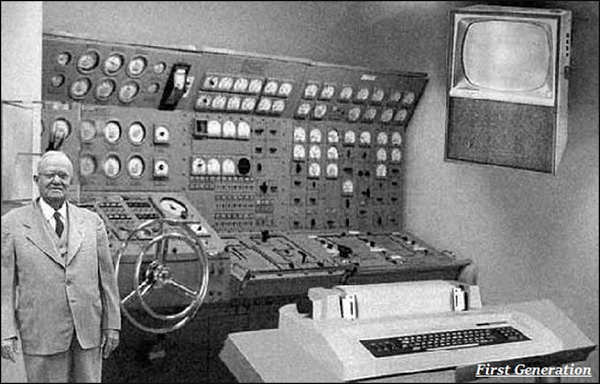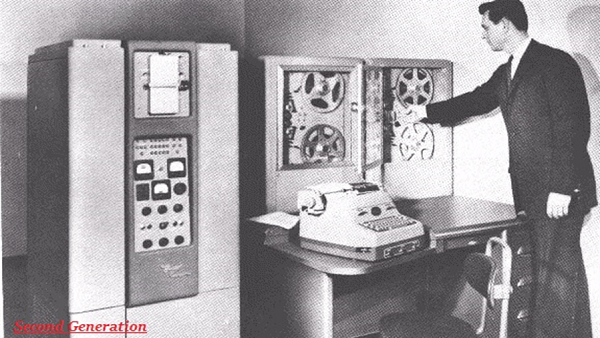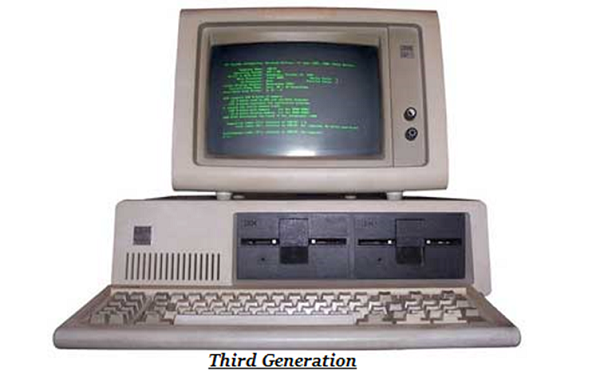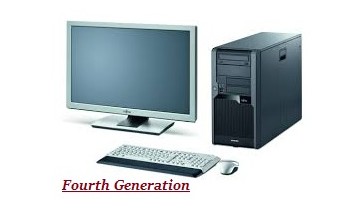Introduction:
The development of computer systems is normally discussed as the development over different generations.
With the succession of different generations, came the advancement in computer technology.
Computer Generations
Let us now discuss the development in Computer Technology over the different generations.
First Generation
The period 1940 to 1956, roughly considered as the First Generation of Computer.
The first generation computers were developed by using vacuum tube or thermionic valve machine.
The input of this system was based on punched cards and paper tape; however, the output was displayed on printouts.
The first generation computers worked on binary-coded concept (i.e., language of 0-1). Examples: ENIAC, EDVAC, etc.

Second Generation
The period 1956 to 1963 is roughly considered as the period of Second Generation of Computers.
The second generation computers were developed by using transistor technology.
In comparison to the first generation, the size of second generation was smaller.
In comparison to computers of the first generation, the computing time taken by the computers of the second generation was lesser.

Third Generation
The period 1963 to 1971 is roughly considered as the period of Third Generation of computers.
The third generation computers were developed by using the Integrated Circuit (IC) technology.

In comparison to the computers of the second generation, the size of the computers of the third generation was smaller.
In comparison to the computers of the second generation, the computing time taken by the computers of the third generation was lesser.
The third generation computer consumed less power and also generated less heat.
The maintenance cost of the computers in the third generation was also low.
The computer system of the computers of the third generation was easier for commercial use.
Fourth Generation
The period 1972 to 2010 is roughly considered as the fourth generation of computers.
The fourth generation computers were developed by using microprocessor technology.

By coming to fourth generation, computer became very small in size, it became portable.
The machine of fourth generation started generating very low amount of heat.
It is much faster and accuracy became more reliable.
The production cost reduced to very low in comparison to the previous generation.
It became available for the common people as well.
Fifth Generation
The period 2010 to till date and beyond, roughly considered as the period of fifth generation of computers.
By the time, the computer generation was being categorized on the basis of hardware only, but the fifth generation technology also included software.
The computers of the fifth generation had high capability and large memory capacity.
Working with computers of this generation was fast and multiple tasks could be performed simultaneously.
Some of the popular advanced technologies of the fifth generation include Artificial intelligence, Quantum computation, Nanotechnology, Parallel processing, etc
Generation in computer terminology is a change in technology a computer is/was being used. Initially, the generation term was used to distinguish between varying hardware technologies. Nowadays, generation includes both hardware and software, which together make up an entire computer system.
There are five computer generations known till date. Each generation has been discussed in detail along with their time period and characteristics. In the following table, approximate dates against each generation has been mentioned, which are normally accepted.
Following are the main five generations of computers.
1 First Generation
The period of first generation: 1946-1959. Vacuum tube based.
2 Second Generation
The period of second generation: 1959-1965. Transistor based.
3 Third Generation
The period of third generation: 1965-1971. Integrated Circuit based.
4 Fourth Generation
The period of fourth generation: 1971-1980. VLSI microprocessor based.
5 Fifth Generation
The period of fifth generation: 1980-onwards. ULSI microprocessor based.



No comments:
Post a Comment